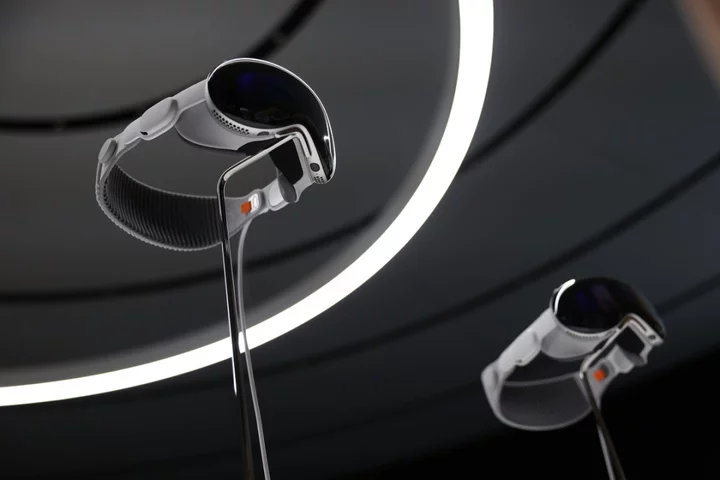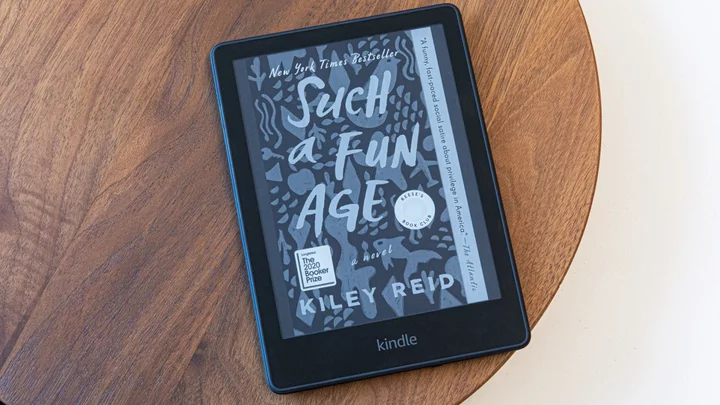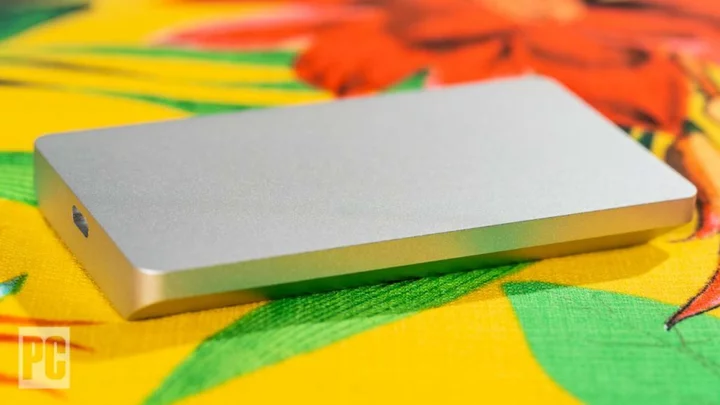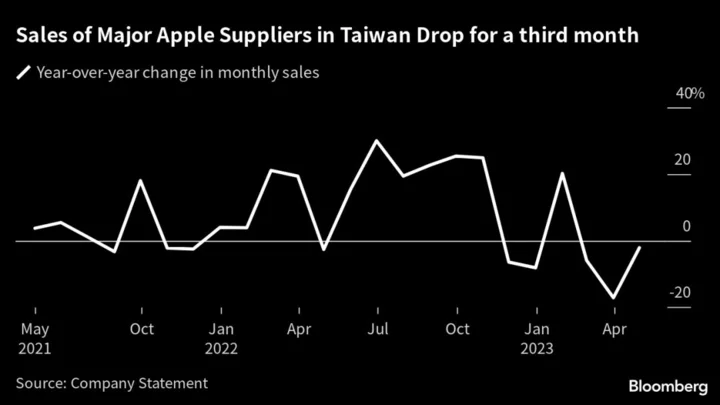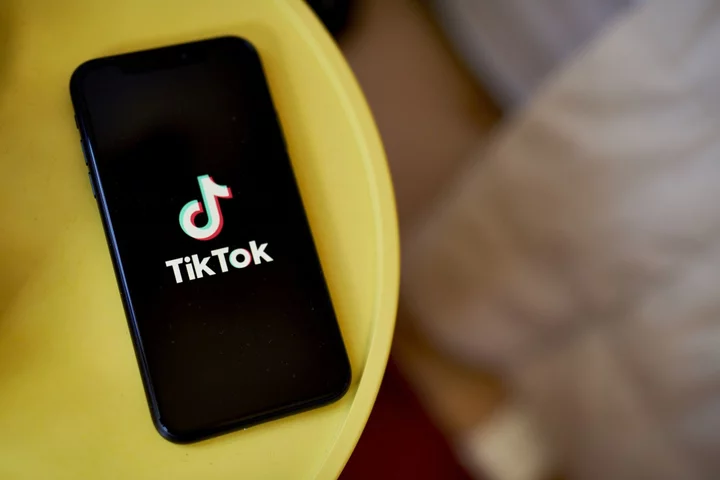I am sat in someone else's living room, with someone else's children, celebrating someone else's birthday, and I am on the edge of tears. I'm one of the first people in the world to try Apple's new "Vision Pro" virtual reality headset, and I am about to start weeping for a family I have never met.
After half an hour’s demonstration, I’m convinced the headset is exactly what Apple says it is: a clear vision of the future, and a convincing statement about where computing is going. If there is anything to worry about, it may be that it is so compelling and so moving that it will put a obligation on both Apple and developers to use it responsibly. The question should not only be whether this will change the world, but how.
Apple announced the Vision Pro headset at its Worldwide Developers Conference this week, finally confirming years of speculation about its plans for virtual and augmented reality. What it revealed was a headset that was astonishing, even if it was not necessarily a surprise.
It is $3,499, beautifully designed, focused on not cutting people off from the real world by using "video passthrough" to let you see the room around you, and a powerful computing platform that offers a new way of engaging with software. The big question that remained was whether it could actually live up to the large claims made in the introduction video.
It does live up to them. And more. There was nothing necessarily unexpected about using the headset – it is exactly what Apple says – but it was nonetheless astonishing in the way that it lived up to what may seem like unreal hype.
My time with the headset began in a large white cube called the Field House, especially built at the Apple Park campus specifically to show off the the Reality Pro. Visitors first had their face scanned with an iPhone, to get the right-sized headset, and their ears scanned to ensure the spatial audio was correctly calibrated; after that, I visited another Apple worker who checked whether I wore glasses, and would add the relevant lenses to the headset if I did.
I then entered a room for the main event. There was the headset: glowing, shiny ski goggles made out of aluminium, glass and cloth. It looks just as futuristic and stylish as it does in the pictures. The best comparison is definitely the AirPods Max, which have a similar bulk and have much the same design language.
Apple has had a lot of experiences making advanced tech into something you're happy to wear, in the form of the AirPods, Watch and other products, and it shows in the headset. Despite being a very innovative looking slab of metal and glass, it is not off-putting.
Vision Pro is made up of a series of straps and soft touches that allow the enclosure to sit on your head. On the inside of the enclosure is the lenses and display; on the outside sits not only another display that will show to other people, but also an array of sensors that includes 12 cameras and tools that can measure the 3D environment.
The headset snaps softly onto your head, with a series of straps that ensures it sits snug and comfortable over your face. There's time for a little more setup – you need to teach the headset about how your eyes work, by following dots around a screen – and then the demo really began.
Almost instantly, it was clear that the hardware does exactly what Apple says it does. Virtual objects and screens were convincing and immersive; the real world that you could see behind them was mostly authentic and faithful. While there are things that will no doubt be improved in future generations, such as width of the field of view and the brightness, they were not so glaring as to get in the way of the sheer wonder of the experience.
Inside Reality Pro I looked at photo albums, which brought panoramas to life by putting them right up to your eyes, so close and so sharp that you could almost smell them. Apps flew in and out of view, and I opened up a quick meditation that imposed a pulsing sculpture onto the room that helped control breathing as a soft voice floated around my head. And then we were onto the films and entertainment.
Apple showed off a new format called Immersive Video, which uses proprietary cameras to show a 180-degree view that also includes spatial audio. It allowed you to be hovering on a cliff, or floating beneath the sea, though perhaps the most convincing demo was of a series of sports games, in which you felt as if you could really be hit by a ball and could also direct your own coverage, by turning your attention to whatever player or play was of interest.
Throughout, that experience was as immersive or transparent as you wanted, and you can reach up to a dial on the top of the headset to allow more or less of the real environment to show on the headset. The cameras and display are such that the real world looks convincing enough that you forget what's going on; the outside does not look the same as not wearing the headset, but close enough that it doesn't necessarily matter.
At one point, for instance, I am looking through the headset just at the real world when I receive a notification that someone is calling me. I answer and a member of Apple's team is there – or rather it is his "digital persona", which is created when you first set up the headset. It is like a very accurate video game character that is animated based on how the headset sees you moving when you talk; it is perhaps the only part of the demo that doesn't feel quite ready, since he is just on the wrong side of uncanny valley and I feel as if I am talking to someone in a game.
The FaceTime call and the digital persona within it are projected on top of the room. If I were at home, I could tidy the room as we chatted, with his face there all the while; but I could also twist that crown to have the real world disappear, for extra focus. Apple has also ensured that even if I were fully immersed in the call, people in the real world who enter the room will break through that immersive reality, looming up to talk to me so that I don't lose touch with the real world. This feels important, since some virtual reality headsets can induce fear by cutting you off from what is going on outside, whereas Vision Pro never lets you forget where you are.
All of these apps were controlled simply by looking and touching your fingers together. The headset's sensors are precise enough to know exactly where your eyes are pointing, and where your fingers are, with accuracy that is alarming at first but means the technology swiftly melts away.
I won't describe all of the experiences in depth because reading about them is no doubt something like having someone tell you about their dreams: fascinating to the person who had it, no doubt, but the product of a private world that has no meaning for anyone else. In that spirit, this review could neatly be summarised fairly quickly: you need to try it as soon as you can, and you will probably love it. But Apple only has a small supply of the headsets until their release sometime next year, and even then they will be very highly priced and potentially in short supply.
But those images of the birthday party, shown halfway through the demo, embody exactly what is so powerful about the headset. Apple showed them as part of the demo of the Photos, after it had shown off more traditional images. With a swipe, I was watching what it calls a "spatial video": in front of me was a coffee table with a birthday cake on it, and beyond that a sofa with children celebrating. There was real and convincing depth there, enough to make you feel like you were almost there.
But the almost is key: there was just enough separation to make you feel at a slightly distance, which made me well up with a feeling something like nostalgia or grief. Such a reaction sounds a little ridiculous in the cold light of day, but at the time was instant and undeniable. I felt as if I had been transported back into the image, but as if I was a ghost.
This was moving enough when looking at a video of a family I did not know. I have no idea how it might feel to look back on a real memory this way. And I am not sure I could bear to watch such an immersive image of a lost loved one; it is truly like replaying a memory, with all the sweet melancholy that prospect invokes.
This is not in any way a criticism of the technology – quite the opposite. We don't criticise films for making us cry. It is just to note that it is powerful, and profound, and with that power becomes great responsibility. The Vision Pro is absolutely not a toy.
After the keynote, and the early demos, there was some concern that there was another kind of dystopia in this scene of the birthday: that parents would be forced to wear headsets to children's birthdays to capture them for future viewing. The aim of the headset is supposedly to connect people to the present moment, people said, but in fact it separated them from it by forcing them to dress up so they could watch the moment at a later date.
Those worries, it turns out, are mostly misplaced, since you can use the headset as a camera when it is not on your head. It has a button on the top to make that easier, and turns the headset into something like a camera with an unnecessary strap. But this concern might also be made obsolete by the time the headset is actually released, since it feels almost inevitable that the iPhone 15 coming in September will include cameras for taking spatial audio and videos.
That is one of the many parts of using the Reality Pro that feels like a matter of waiting: Apple has explicitly said that some of the reason for the large delay between revealing it and releasing it is to ensure that its designers and developers have time to understand exactly what developers want from the headset, and ensure it is ready to give it to them. The Reality Pro that arrives early next year – which could mean any time as late as the end of May 2024 – might be a very different thing from the one shown off in California this week.
After half an hour or so of the demo, I headed into the final experience of the day: an app Apple called Encounter Dinosaurs, in which the far wall opened up to reveal an array of creatures roaming around a virtual scene. The dinosaurs then moved into the room, and I moved around them, in a way that was astonishingly lifelike.
Those two experiences – of having virtual objects come into the real world, like those dinosaurs, and have real world memories brought back to life as virtual objects – they were the two "killer apps" of the demo, the use cases that made the hardware seem worth it. Many of the other experiences were made up of virtual screens showing normal apps projected into the room, which is compelling but remains a normal experience elevated into virtual reality, rather than an entirely new way of doing things.
The dinosaurs returned to their virtual world, the wall closed shut and the room turned back into a room at Apple Park, I sat back down and the experience was over. The headset came off and while there was a little relief to be free of the slight weight of it, it's possible to imagine staying in it comfortably for much longer. I am given to motion sickness in virtual reality and while I sometimes felt a little off, it was mostly not there; Apple says the technology in the headset allows the latency to be so low that it shouldn't be a problem for most.
Without the headset, the room was back to being its normal, entirely non-virtual self. I immediately felt the loss of the ability to pinch to allow apps to appear, and the real world felt a bit lacking in the liveliness that the virtual objects had given it.
This is perhaps the flip side of Apple's very sensible effort to ensure that wearers of the headset remain connected to the real world, not divorced from it: it means that wearing the headset makes life more exciting, to the point that bare reality might seem a little dull. Again, there is nothing to indicate that this is the case, and Apple has given every indication that it is working to avoid it – but the power of the technology means the stakes are very high.
Apple clearly understands those stakes, and stressed throughout the introduction that it was revealing a platform as much as a piece of hardware, and that it was just the beginning of its plans. The demo felt much the same, and though the hardware was wildly impressive it was always in service of the "spatial computing" that Apple says it is going to enable. The Vision Pro is intended as much as a way of allowing people to experience that view of the future as it is an astonishing piece of kit in itself.
That future looks bright, immersive, compelling and useful. It's starting to feel real.
Read MoreApple finally fixed one of the most embarrassing things about typing on an iPhone
Apple lets people get brand new iPhone update early – but there’s a very big warning
The price of Apple’s Vision Pro headset is truly out of this world
The glaring omission from Apple’s AR headset launch
Apple’s ‘revolutionary’ Vision Pro headset could read your mind
Apple don’t want you to buy a headset - they’re selling a vision of the future

